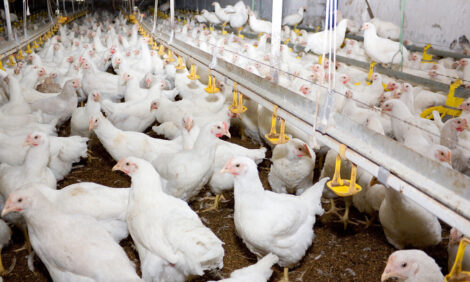



Cutting Food Waste Could Save Global Economy $300 Billion
ANALYSIS - Reducing consumer food waste could save between $120 billion and $300 billion a year by 2030.A new report by WRAP (The Waste & Resources Action Programme) and the Global Commission on the Economy and Climate says that to achieve this would require a 20-50 per cent reduction in consumer food waste.
One third of all food produced in the world ends up as waste, while the value of global consumer food waste is more than $400 billion per year.
As the global middle class expands over the course of the decade, the cost could rise to $600 billion, according to new research conducted by WRAP for the Global Commission.
Their report, Strategies to achieve economic and environmental gains by reducing food waste, also identifies significant opportunities to improve economic performance and tackle climate change by reducing the amount of food that is wasted in agriculture, transport, storage and consumption.
Dr Richard Swannell, Director of Sustainable Food Systems at WRAP said: “Food waste is a global issue and tackling it is a priority.
“This report emphasises the benefits that can be obtained for businesses, consumers and the environment.
“The difficulty is often in knowing where to start and how to make the biggest economic and environmental savings.
“In partnership with UNEP and FAO, WRAP produced international guidance on how to achieve that through implementing effective food waste prevention strategies that can be used across the world.
“Consumers also have a role to play. In the United Kingdom, where we are based, the majority of food waste occurs in the home.
“Through our consumer campaign Love Food Hate Waste we empower consumers with advice and tips on how to waste less and save more.
“Between 2007 and 2012, this helped householders reduce avoidable food waste by 21 per cent, saving a total of £13 billion.”
Reducing food waste can also make a significant contribution to tackling climate change.
A total of seven per cent of all global greenhouse gas emissions (GHGs), or 3.3 billion tonnes CO2 equivalent (CO2eq) per year, are due to food waste.
WRAP estimates that by 2030 global GHGs could be lowered by at least 0.2 and possibly as much as 1 billion tonnes CO2eq per year through food waste reductions, more than the annual emissions of Germany.
When food waste is decreased, this makes it more likely that an increasing population can potentially be fed from the same amount of land.
Helen Mountford, Global Programme Director for the New Climate Economy, said: “Reducing food waste is good for the economy and good for the climate.
“Less food waste means greater efficiency, more productivity, and direct savings for consumers. It also means more food available to feed the estimated 805 million that go to bed hungry each day.
“Reducing food waste is also a great way to reduce the greenhouse gas emissions that contribute to climate change. These findings should serve as a wakeup call to policymakers around the world.”
The report highlights how practical changes, such as lowering the average temperatures of refrigerators or designing better packaging, can make a considerable difference in preventing spoilage.
Approximately 25 per cent of food waste in the developing world could be eliminated with better refrigeration equipment.
WRAP’s findings contributed to Better Growth, Better Climate: The New Climate Economy Report.
The report, released in 2014 by the Global Commission on the Economy and Climate, demonstrates how countries can achieve economic growth while dealing with the risks posed by climate change.
The report highlighted how reforms in urban development, land use and energy policy would lead to sustained growth in a low-carbon economy.








